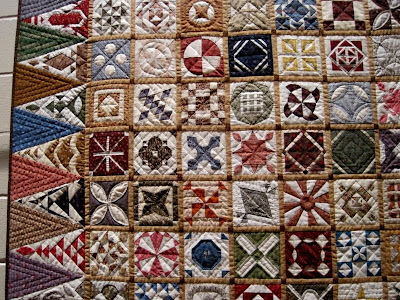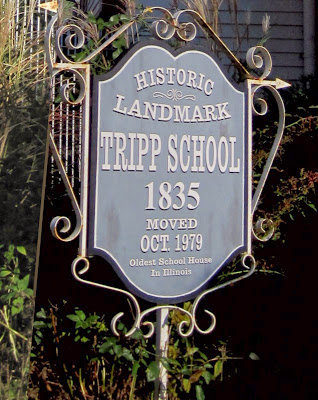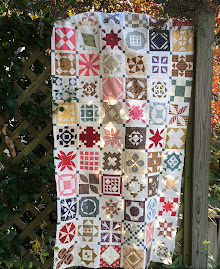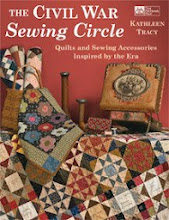In the last post I talked about attending a quilt show that featured mostly contemporary quilts and other fiber arts. The next day I attended another show, put on by the Northwest Suburban Quilters Guild of Illinois, that was as different from that one as could be.
Pieceful Gathering Quilt Shop was vending at this show and Carrie, the owner, is always so nice about displaying my books and quilts at her booth. She even has a whole page on her website devoted to kits for quilts from my books, the "Kathleen Tracy Doll Quilts" page, LOL. You can find kits for both of the quilts I show below at her online store.
Here's her version of my little Lincoln's Platform quilt from Remembering Adelia. I like the way it turned out and I think I actually like HER border better than mine.
This is the Calico Comfort nine-patch quilt from the same book.
I met Dorothy from Ewe-nique creations and admired her lovely wool Block-of-the-Month Crazy Quilt. I've never been a crazy quilt fan, but lately some have been thrown my way, and you know what? I actually like them now.
This is the little crazy quilt I made that's in my book American Doll Quilts:
Most of the quilts at the show were very traditional and I loved the ones made with reproduction fabrics from the 19th century.
Madelyn, from my SmallQuiltTalk group, made this sampler and the little one below it:
But this is the quilt that stopped everyone in their tracks. A "Dear Jane" quilt made by Shar Snellman:
If you're at all interested in quilt history or quilts made during the Civil War, you probably have heard of the Dear Jane quilt from 1863 made by one Jane Stickle. It is actually dated and signed: In War Time 1863 Pieces 5602 Jane A. Stickle. There are 225 different blocks and it's really an incredible quilt. It's assumed that Jane made the quilt with so many little pieces to occupy herself during the Civil War and, like many women with loved ones in the war, to take her mind off of the anxieties and worries she may have been experiencing. Here's the original, which resides in the Bennington Museum in Vermont:
WOW!
Brenda Papadakis spent five years researching and documenting Jane Stickle's quilt. In her book, Dear Jane, she tried to reproduce each block as accurately as possible. There are Dear Jane enthusiasts all over the country and other parts of the world making Dear Jane quilts in all sorts of versions. Some try to reproduce Jane's quilt faithfully using the same colors and Civil War fabrics and some make the blocks using contemporary fabrics.
I can see why so many quilters are in love with this fabulous quilt. It's the ultimate sampler quilt, every block unique. Making a quilt like this would be a BIG commitment, but then I could actually step back and say “Wow, I made this." I've been toying with the idea of starting one for quite awhile and seeing Shar's finished quilt motivated me again. I'm going to do it. Madelyn said it took her 10 years to finish her quilt--it's almost done. What else am I doing in the next 10 years?? If I make one block a week and stick to it . . . maybe it would take me 5 years at the earliest? More likely 15 . . . but that's ok. I'll just make it one of my lifetime goals.
Shar said it took her 4 years to make hers and I can't imagine the work she put into it. But look at that smile now that it's finished!
Right now I have to concentrate on finishing my next book, but after that, in the Spring and Summer, who knows? Can I do this? Am I nuts? Has anyone else finished one and do you have any advice for me? Stay tuned for my excellent quilting journey next year. Unless I chicken out.







































































